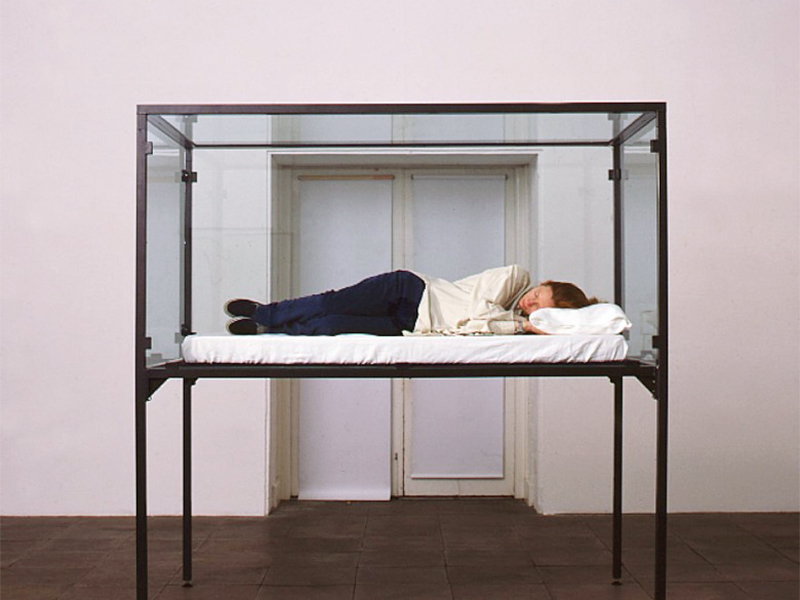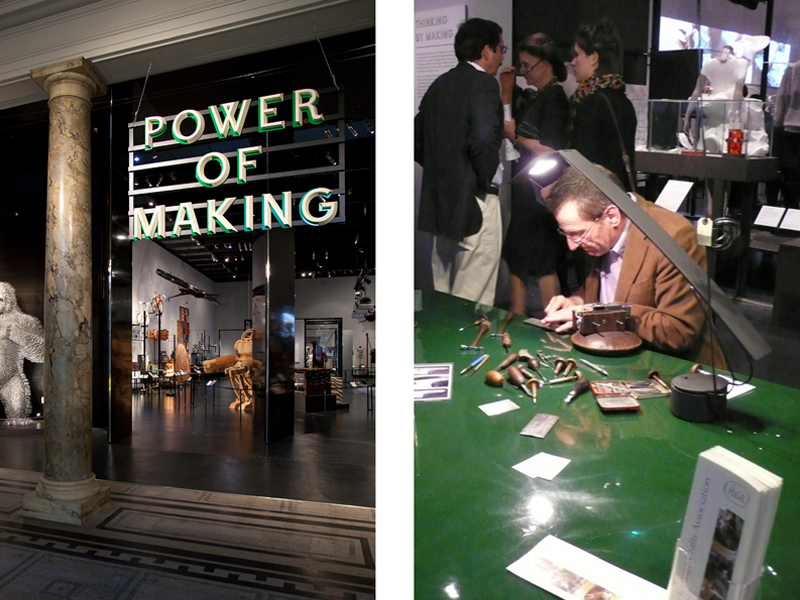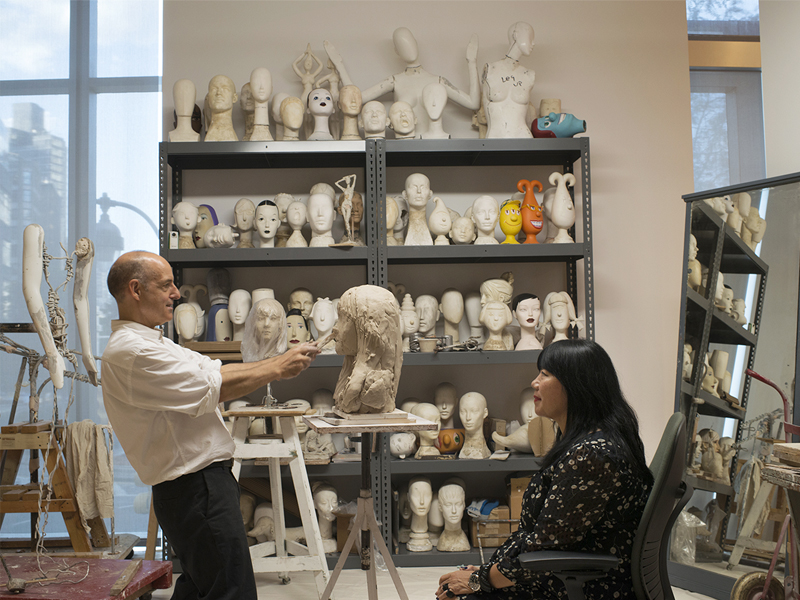
Here’s a little guideline for art world success: If you’re an artist staging a performance in a gallery, do as little as humanly possible. For her exhibition The Artist Is Present, Marina Abramović famously held court in the Museum of Modern Art, motionless, for months on end. In Artifact Piece (1987), Native American artist James Luna presented himself lying on a slab table, ready for inspection. Yoko Ono has repeatedly staged Cut Piece, in which she stares straight ahead as audience members gradually scissor the garments she is wearing. Tehching Hsieh carried out a series of one-year performances beginning in 1978, all involving extreme inaction; for the first, he simply sat silently in a wooden cage for the whole 12 months. When Chris Burden had himself shot by a marksman, he just stood there and waited for the bullet.
When the artist is not there to perform in person, a surrogate will do. Tilda Swinton has been presented asleep in a clear box, at the behest of British sculptor Cornelia Parker. Vanessa Beecroft has made a whole career out of arranging variously attired models in rank and file, and telling them not to flinch. If the artist must perform some action, by all means they should not acknowledge the audience. Joseph Beuys huddled under a blanket when he got in a cage with a coyote (I Like America and America Likes Me, 1974). And Tracey Emin painted in a Stockholm gallery for three weeks in 1996, stark naked. The public was only allowed to look at her through fisheye lenses in the wall. By the standards of the canon, that counts as interactive.

The foregoing list, admittedly a selective one, nonetheless includes several of the iconic performance art works of the last 50 years. Why is it that all of them demand such stoicism, and so little engagement? A cynic might say that it’s simply an extension of the art world’s well-earned reputation for passive-aggressiveness. To be “cool” in any field of culture, it’s important to seem like you don’t give a damn.[1] It works for rock stars, actors, and athletes, and it works for artists too. Yet there’s something especially pronounced in the performance artist’s studied detachment. To get to the bottom of this matter is to see, yet again, how fine art instinctively distinguishes itself from craft practice.
What craftspeople do, of course, is demonstrate. They do it in craft fairs, in schools, and, if asked, they do it in museums. It’s never a problem. In 2011, when I was working at the Victoria and Albert Museum, I supported curator Daniel Charny in the realization of an exhibition called The Power of Making.[2] It included a “maker space” (this was before every municipal library had one) where people could demonstrate 3D printing and other tech-forward procedures. Spectators loved it. During my two-year tenure as director of the Museum of Arts and Design (MAD), we invited artisans to show their skills in the galleries—Michael Evert, the lead sculptor for the mannequin producer Ralph Pucci, fashioned portraits out of clay live in front of a fascinated audience.[3] At the heart of MAD is an open studio where the general public can meet a maker and find out how they create their work.
Prominent contemporary artists seem completely willing to take their clothes off in front of audiences, but will hardly ever so much as talk to them, much less go so far as to explain what they do for a living. Why is this? It may help to consider the word demonstrate itself. When I sat down to write this essay, I thought it might derive etymologically from the same root as “democracy.” This turns out not to be the case—it simply means “to point out, to offer proof.” (The root is the same as montrer, French for “to show.”) But I was not far wrong, because the expectation that something should require proof is its own form of democratic instinct: In America, we often call Missouri the “Show Me State,” because of its level-headed citizens’ supposed refusal to accept assertions from those in power. And we might say that this expectation is one of the deepest distinctions between modern art and modern craft.

As any maker will tell you, one of the questions they are most often asked is, “how long did that take?” Craft is something that one pays for by the hour. Since the Industrial Revolution, when the handmade attained its present oppositional role within modern culture, this “time spent” has acquired ethical gravitas.[4] Once craftspeople were superseded by machines, and could no longer contribute value through their efficiency, the idea arose that they could offer a deeper, more human sort of value, through skill and patience. These virtues are appreciated in and of themselves. This paradigm accounts for the popularity of the craft demonstration, and the readiness of makers to participate in them. Demonstrating expertise is a chance to assert—to “prove”—hard-won proficiency, and the cultural value it signifies.
Narratives of continuity are also important for craft. Professional trade skills were once passed down through apprenticeship. The guilds may be no more, but there is still a presumption among makers that techniques will be literally handed on from person to person. The association of craft with the concept of “tacit knowledge” (as opposed to explicit description) is a further reason that live demonstration is welcomed.[5] Imagine trying to learn how to weave from someone who never showed you a loom, but only described it in words. Every craftsperson remembers that, at some point, they had to be shown how to do everything they know. By and large, they are more than willing to do the same for others.

Art, meanwhile, is of all human activities the one that is most hostile to the conception of proven value. This is true both in the production phase, where absolute subjectivity is prized, and in the market, where total elasticity is crucial to the whole logic of art as an asset class. The complexity of current art production—which is often carried out by teams of assistants or external fabricators, often behind the veil of confidentiality agreements—militates strongly against the possibility that artists should make their work in public. This scarcely matters, though, because the longstanding emphasis in contemporary art is overwhelmingly on concept over process. The mechanisms of training in art—the lecture and the crit, which punctuate extended isolated studio time—place emphasis on explicit knowledge, conveyed through language. The prejudice against emulative teaching is so strong in art schools that if a student’s work resembles the instructor’s, it is immediately denounced as derivative.
I have often advocated the view that craft should be seen primarily as a verb. Thinking through craft means going behind the proscenium and into the wings. Art—even performance art—is still configured as a noun. It is an object of regard, which meets you on its own terms. All these decades after Brecht, there is still a reluctance to break the fourth wall, much less invite the stagehands to take a bow under the lights. In some ways, this is too bad. It tends to propagate a mystification of artists, and reconfirms in the minds of the public that art is an elite business, whose workings are not available to the casual enquirer. On the other hand, this state of affairs accords to the humble craft demo a truth-telling potential, one that has been marshaled by figures such as Gabriel Craig, or Gitte Nygaard and Josephine Winther (who form Makers Move). It is another reminder, not that one should have been needed, of craft’s underlying democratizing power. Quod, as they say, erat demonstrandum.
INDEX IMAGE: Live clay-sculpting demonstration by Michael Evert, the lead sculptor at Ralph Pucci, as part of Ralph Pucci: The Art of the Mannequin, 2015, Museum of Arts and Design, New York, photo: Karina Eckmeier
[1] See Jeff Rice, “What Is Cool? Notes on Intellectualism, Popular Culture, and Writing,” ctheory.net, 2002. http://www.ctheory.net/articles.aspx?id=338.
[2] Daniel Charny, ed., Power of Making (London: V&A Publications, 2011).




